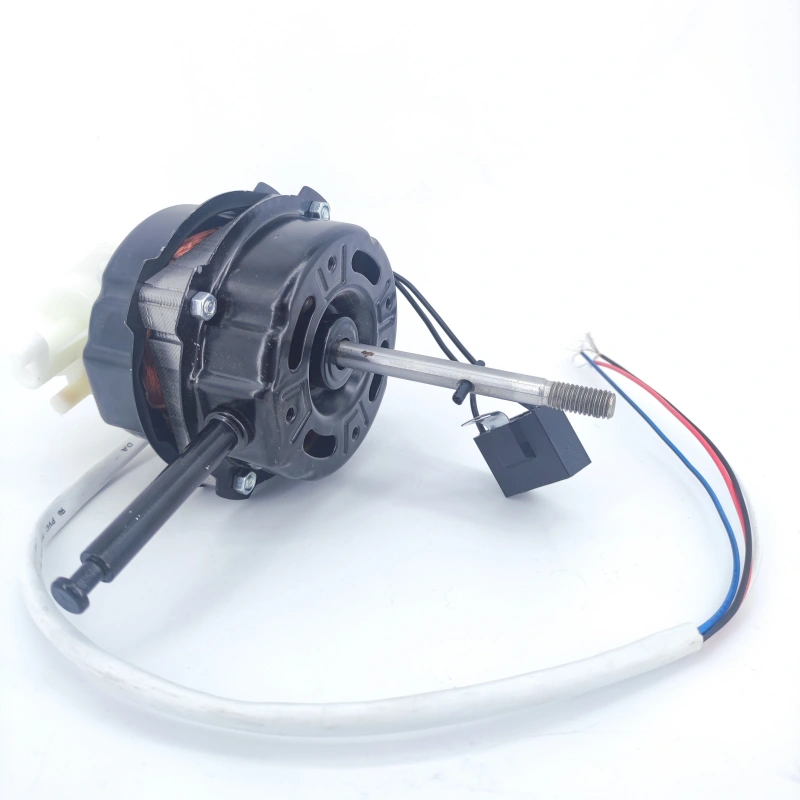Armature resistance is one of the core parameters of a DC motor, and its value directly affects the calculation of the motor’s copper loss, the analysis of starting performance, and fault diagnosis (such as armature winding short circuits, aging, etc.). Accurate measurement of armature resistance requires following a specific process while avoiding interfering factors. The specific methods and key points to note are as follows:
1. Preparation Work Before Measurement
- Selection of Equipment and Tools
It is necessary to prepare a DC double-arm bridge (Wheatstone bridge) with an accuracy class of ≥0.5 or a high-precision digital multimeter (with an internal resistance of ≥10MΩ). The former is more suitable for measuring low-resistance armature resistance (usually in the milliohm to ohm range) and can effectively eliminate the influence of wiring resistance and contact resistance. At the same time, prepare insulating gloves, screwdrivers, sandpaper (for cleaning terminal blocks), and the motor circuit diagram (to identify the position of the armature winding leads).
- Confirmation of Motor Status
Before measurement, the motor must be completely shut down, all power supplies (including the armature power supply and excitation power supply) must be cut off, and energy storage components such as capacitors must be discharged to avoid the risk of electric shock. Allow the motor to cool down to room temperature (usually after shutting down for more than 1 hour) to prevent the resistance value from becoming larger due to temperature rise (the resistance of metals increases with temperature, and the temperature coefficient of copper is approximately 0.004/℃).
2. Core Measurement Method: DC Double-Arm Bridge Method (Recommended)
- Wiring Operation
Refer to the motor circuit diagram to find the two lead terminals of the armature winding (usually marked as “Armature +” and “Armature -“). Use sandpaper to clean the oxide layer and oil stains on the surface of the terminals to ensure good contact. Connect the “current terminals” (I1, I2) of the DC double-arm bridge to both ends of the armature respectively, and connect the “voltage terminals” (U1, U2) in parallel on the inner side of the current terminals (following the principle of “voltage terminals being close to the measured resistance” to avoid including the wiring resistance in the measured value).
- Measurement Steps
Turn on the bridge power supply, adjust the ratio arm of the bridge (select based on the estimated value of the armature resistance; for example, if the estimated resistance is 5Ω, a 10Ω ratio can be selected) and the comparison arm, and observe the deflection of the galvanometer pointer. When the pointer returns to zero or is within the allowable error range (usually ±0.5%), record the ratio arm coefficient (K) and the comparison arm reading (R0), and calculate the actual value of the armature resistance according to the formula Ra = K × R0.
To improve accuracy, the measurement should be repeated 3 times, and the average value should be taken as the final result (multiple measurements can offset accidental errors, such as resistance fluctuations at the moment of contact).
3. Common Interfering Factors and Avoidance Measures
- Influence of Temperature
After the armature winding operates, its temperature rises, which will cause the resistance value to increase (for example, when the motor operates at a temperature of 80℃, the resistance of the copper winding is approximately 22% higher than that at room temperature of 25℃). If it is necessary to measure the “cold resistance” (reference standard state), the motor must be shut down and cooled to room temperature. If it is necessary to measure the “hot resistance” (to analyze operating losses), the measurement should be completed within 10 minutes after the motor is shut down, and the winding temperature at that time should be recorded to facilitate subsequent data correction.
- Residual Magnetic Flux and Induced Electromotive Force
After a separately excited or shunt-excited DC motor is shut down, the excitation winding may have residual magnetic flux. When the armature rotates, an electromotive force will be induced (similar to a generator), which interferes with the bridge measurement. Avoidance method: Before measurement, short-circuit the two ends of the armature with a wire, and manually rotate the motor shaft 3-5 times to release the residual induced electromotive force. If interference still exists, the excitation winding wiring can be disconnected to eliminate the influence of residual magnetic flux.
- Wiring and Contact Resistance
If an ordinary multimeter (single-arm measurement) is used, the wiring resistance (such as wire resistance, terminal contact resistance) may account for a large proportion (for example, if the armature resistance is 1Ω and the wiring resistance is 0.1Ω, the error reaches 10%). Therefore, a double-arm bridge must be used to measure low-resistance armature resistance. During measurement, ensure that the cross-sectional area of the wire is ≥1.5mm² (to reduce wire resistance), and tighten the terminals with a screwdriver to avoid virtual connection.
4. Data Analysis and Application After Measurement
- Data Comparison and Judgment
Compare the measured armature resistance value with the standard value in the motor factory manual: If the actual value is more than 15% higher than the standard value, it may be due to the aging of the armature winding (wire oxidation, insulation layer carbonization) or inter-turn short circuit (part of the winding is connected, resulting in a decrease in total resistance, which needs to be judged in conjunction with other tests). If the actual value is smaller, it is necessary to check for inter-turn short circuits in the winding (a megohmmeter can be used to measure the winding insulation resistance for auxiliary judgment).
- Practical Application Scenarios
The accurate armature resistance value can be used to calculate the motor starting current (according to the formula Ist = U/Ra, where U is the armature voltage) to determine whether the starter is matched. At the same time, it can be used to calculate the copper loss (Pcu = Ia²Ra, where Ia is the armature current) to optimize the motor energy efficiency (if the copper loss is too large, it is necessary to check whether the winding has abnormal heat generation).
In conclusion, the accurate measurement of DC motor armature resistance requires selecting appropriate tools, controlling environmental conditions, avoiding interfering factors, and combining multiple measurements with data comparison. Only in this way can a reliable basis be provided for motor maintenance and performance optimization, and maintenance errors or equipment failures caused by incorrect parameter judgment be avoided.




